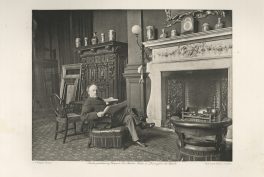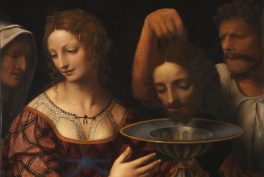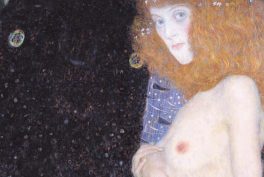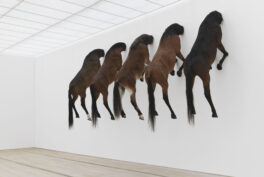Summary
We asked Turkish illustrator Bartu Bölükbaşı a few questions. In addition to his career in illustration and upcoming projects, the artist talks about many inspirational artistic styles from his upbringing. Discover the artist’s story while learning about mythology and particulars of illustration.
A Warm Start
M: I’d like to start with a generic question to set the mood for the rest of the conversation. What are some of the main sources of inspiration for you as an artist? Are there any artists, movements, or places that inspire you when creating your illustrations?
B: To answer this in a comprehensive way, every cultural work that I read or watch contributes to my inspiration reserve. Still, the primary works that helped me develop my style of drawing and manner of expression are the major works that I have been acquainted with since my childhood. Mainly, these works were related to social sciences such as history, archeology, anthropology, mythological stories, fantasy literature, comic books, and horror cinema. In addition, I got acquainted with black metal subculture during high school. Needless to say, it has an undeniable effect on my art. From its emergence in the 1990s, black metal arose in reaction to the conformism of the middle-class conservative Christian majority in Scandinavian societies. Therefore, it criticized the view that was a part of the national narrative which was created based on this conservative majority.
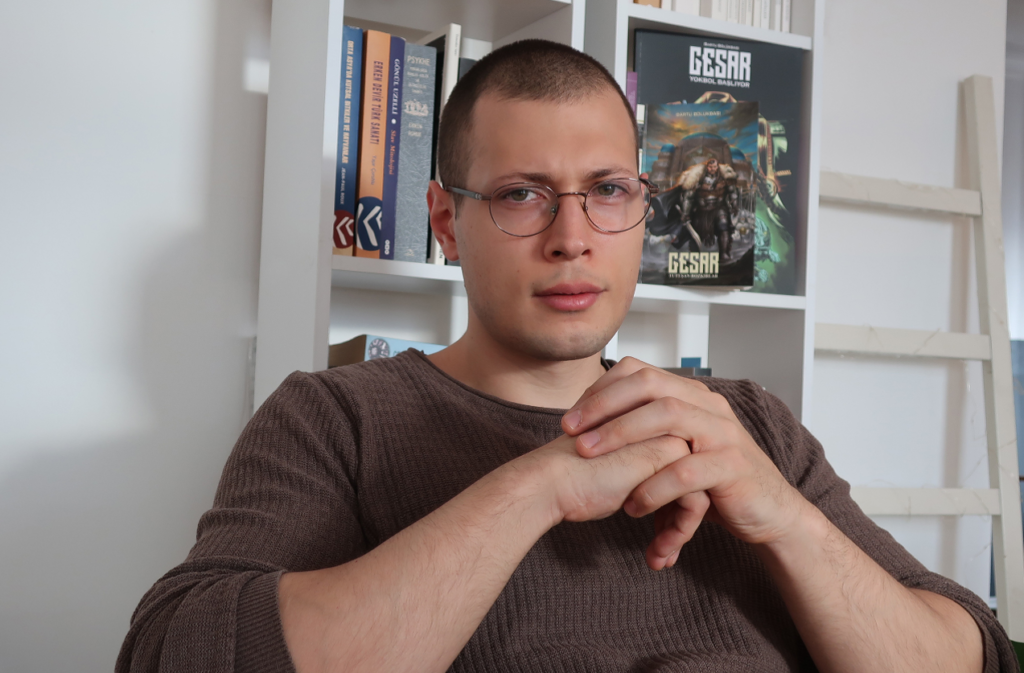
Photo of the illustrator Bartu Bölükbaşı. Image courtesy of the artist.
B: Their narrative suggested that Christianity was equal to civilization. This was a raw expression of the Nietzscheist reaction to the fact that Christian values and modernism rendered the society dysfunctional, although technically improving it and promising a bigger reconciliation. To sum up, the Scandinavian youth were fed up with the conservative attitude and lack of enthusiasm in their society. They could not change this fact about their society, but at least they wanted to differentiate themselves from this section. Therefore began the romanticism for the pagan Viking times. In my case, I was feeling a similar alienation to [from] my society for a variety of reasons, too. So, when I came across this neo-pagan romanticism, it didn’t take long for me to internalize it. However, historically speaking, I was aware that this problem was not so one-dimensional and raw. Having established itself opposite to Christianity, black metal was at the same time immortalizing Christian values. That is why, I did not establish my art based simply on opposition to conservatism.
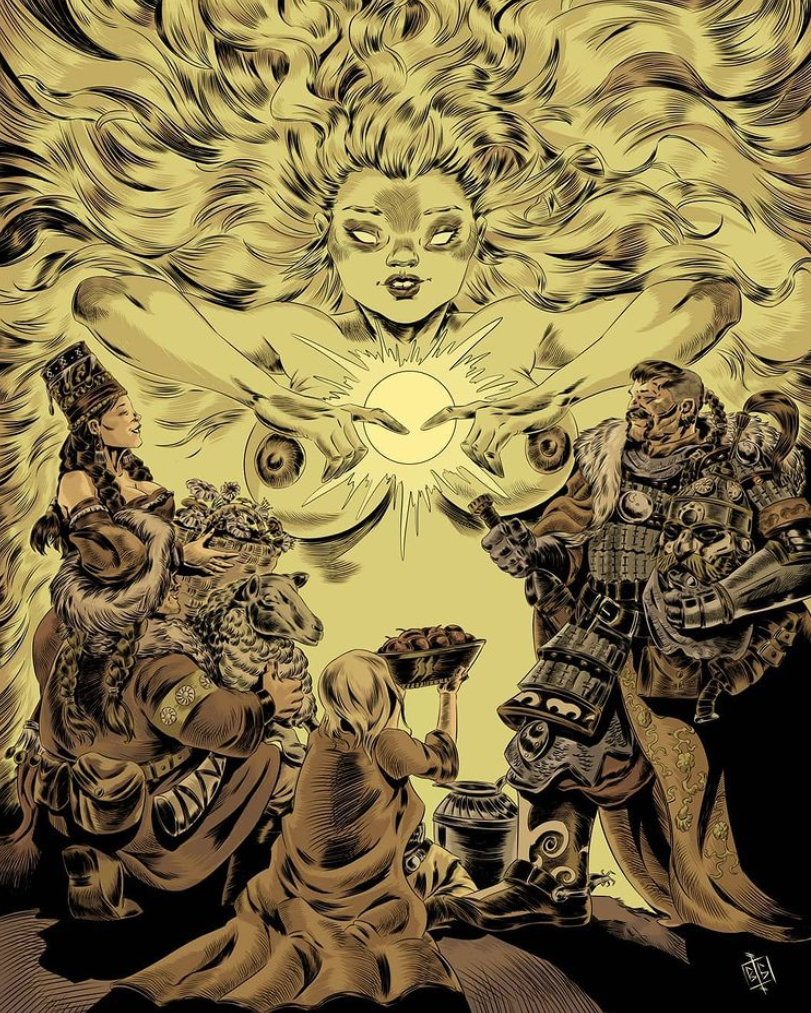
Bartu Bölükbaşı, The Sun Goddess, Kün-eş in Turkic Mythology. Artist’s Instagram.
B: I wanted to revive the old Turkic culture with its own atmosphere and the cultural sources it was feeding on. This way, it could stand in front of the society with all its vitality. I think exactly for this reason, my followers tell me that when they see my illustrations, they do not get the epic feeling in the sense that has been familiar to them until today. On the contrary, they feel an excitement that feels like rediscovering a fantastic realm that has been forgotten a long time ago. Artistically and intellectually, I have been influenced by the 19th century as a whole, which was a Belle Époque for humanity. I am also greatly influenced by Art Nouveau, a major art movement at the time. I am especially influenced by Pan-Slavist romanticists such as Alphonse Mucha and Ivan Bilibin. My other sources of inspiration include Arthur Rackham, who illustrated Anglo-Saxon and Celtic fairytales; Richard Wagner ,who created operas about Scandinavian eddas; Elias Lönnrot, who reminded Finnish people of their national saga Kalevala after they had been assimilated by the Swedes; as well as Afanasyev and his friends, who compiled mythological tales in remote villages of Russia.
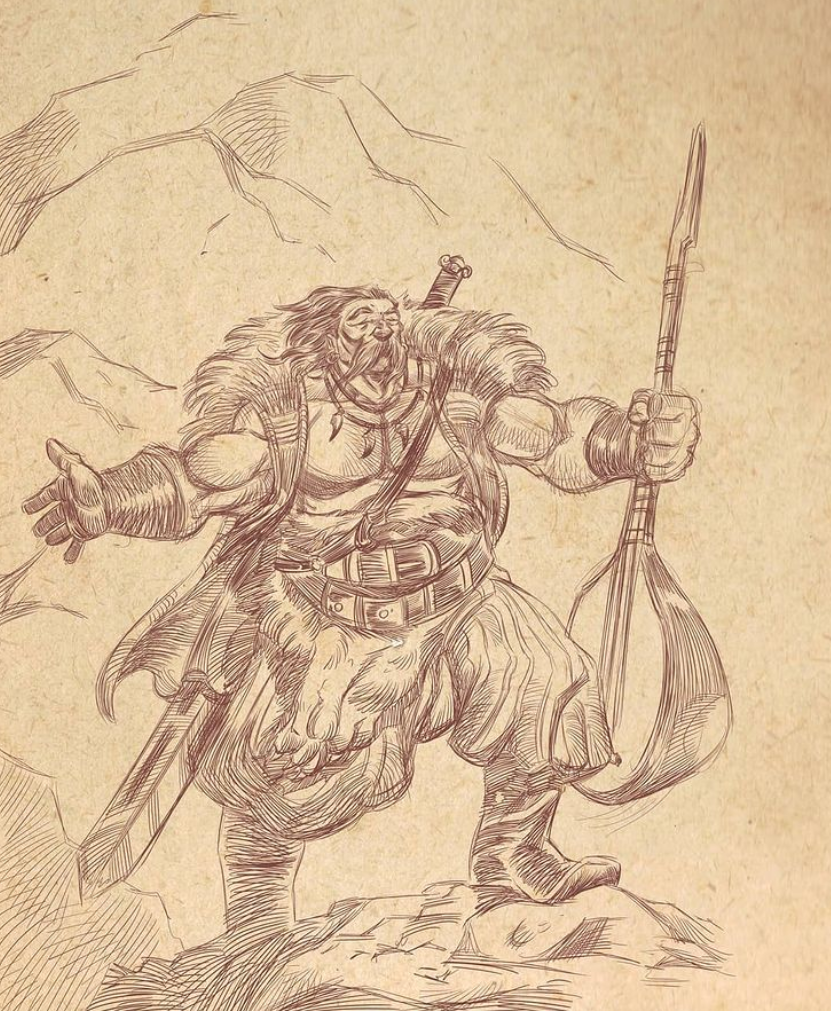
Bartu Bölükbaşı, Köroğlu, a Turkmen character from Anatolia. Artist’s Instagram.
About Mythology
M: How did you get into mythology in the first place? Do you have a favorite mythology?
B: It is hard for me to give a straight answer to this question. This is because I was acquainted with mythology from a young age, thanks to my family. My father is a neurology professor who speaks seven languages, and my mother is a doctor who specializes in pharmacology. Thanks to them, we had an intellectual household and owned a great library. The library was full of books about mythology, political history, biological theory, and botanics in several languages and great variety. It also helped that I grew up in the city of Aydın, which is full of ancient cities. During my childhood, I read a lot of Greek mythological tales such as [the] Iliad and the Odyssey. Living in Aydın, I could easily visit the areas where these tales took place, which felt like I could almost touch the gods from these tales. During those times, I was mainly reading Greek and Egyptian mythologies.
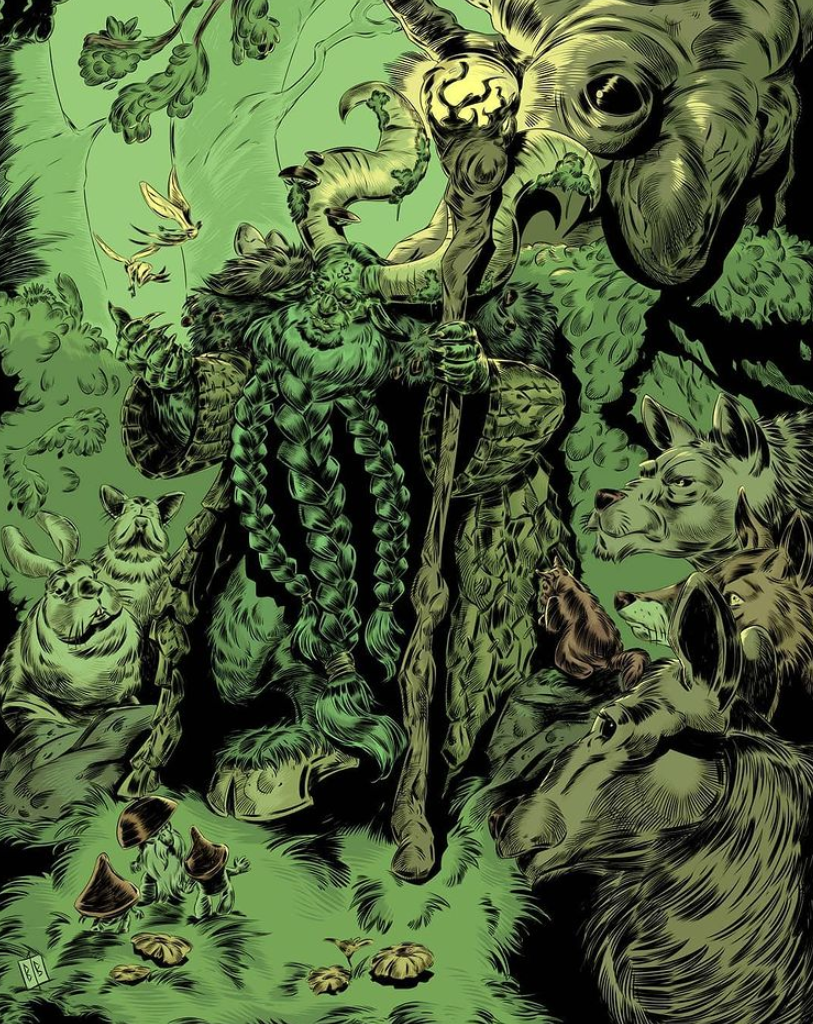
Bartu Bölükbaşı, Arçura, the guardian of the forest in Turkic Mythology. Artist’s Instagram.
B: Still, what affected my character the most was Asterix. Asterix and Obelix, which was created by Uderzo & Goscinny was the type of series that took the reader from the real world and held them captive in ancient Gaul. I am also one of the captives of this world. Being 28 years old, a side of me still lives in that world. I can easily say that nothing was as it used to be after having finished all the comic books and cartoons of Asterix. Around the same time, I discovered Conan the Barbarian on a newspaper stand in Didim, a holiday town near Aydın. This work dragged me, already a mythology enthusiast, to the fantasy literature side of things. My interest in mythology deepened during university after I finished reading the corpora of Joseph Campbell and C. G. Jung. My favorite mythologies are Hindu, Japanese, Slavic, and Celtic.
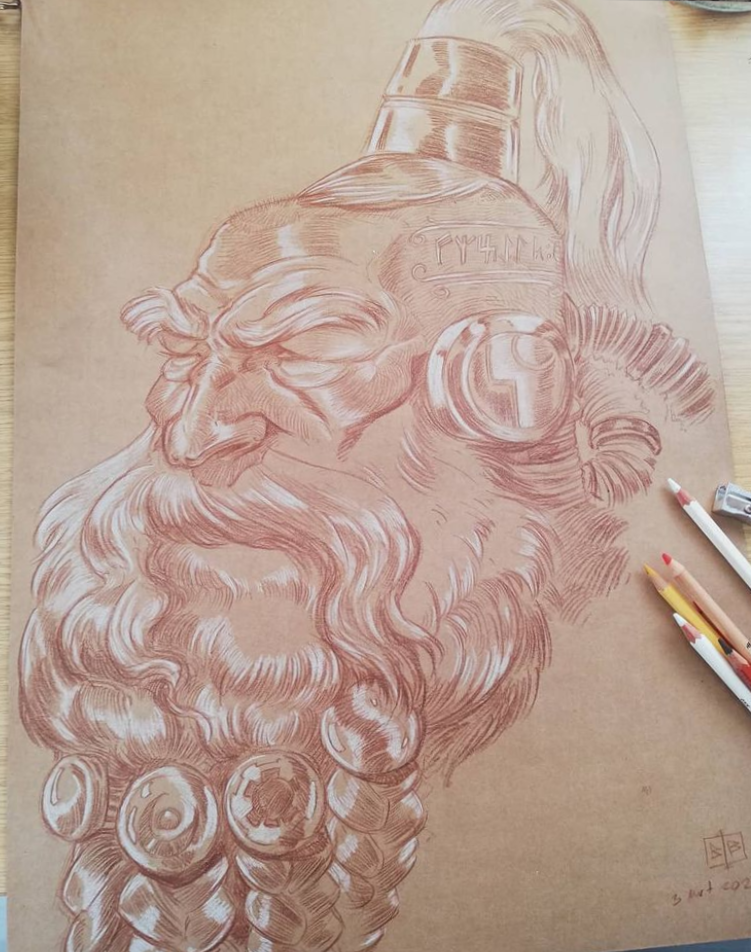
Bartu Bölükbaşı, Bay Ülgen, a major god in Turkic Mythology. Artist’s Instagram.
M: When illustrating a mythological character, do you strongly try to stick to its description in academic sources? Or do you prefer creating a portrayal based on your imagination?
B: Contrary to what many people think, mythological tales/memorates do not feature very elaborate descriptions. For example, in Greek narratives, a goddess is portrayed simply as “a beautiful woman” or a hero as “a stout youngster with black eyes”. As a rule in epic narratives, there aren’t as many details to liken the tale to the real world. Small details as how a hero dresses, what he/she eats, how he/she talks came into question only in the 19th-20th centuries, while mythological tales were being adapted into literature. The elaborate descriptions from Scandinavian, Greek, and Egyptian mythologies, in the sense that we know them, do not depend on the oral cultures of these societies but on the culture industry of today. The Scandinavian pantheon that looks very descriptive today is, indeed, created by the 19th-century romanticists and the Marvel comics company. Without these two movements, Scandinavian mythology would likely be a hobby for a group of Western intellectuals today. None of the primary sources such as Tacitus, Snorri Sturluson, and Saxo feature the very elaborate descriptions that are known today. Turkic mythology is not an exception to all of these. However, an interesting situation applies to it. On the one hand, Turkic mythology never fully vanished and was preserved on Altai mountains and in Siberian taiga. On the other hand, these narratives were quite fragmentary and scattered in plotline, although being very rich in material.
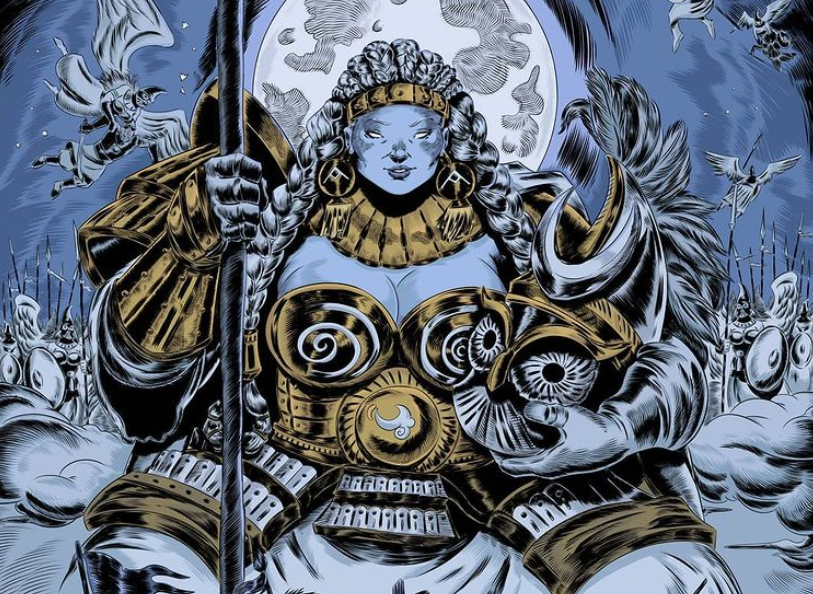
Bartu Bölükbaşı, The Goddess Umay, the mighty creator mother in Turkic Mythology. Artist’s Instagram.
B: When establishing their own modernisms, Western cultures compiled and refined their mythological narratives, as we see in Richard Wagner’s case. Wagner’s refinement depends mostly on his own imagination. In his case, he presented the characters and places as he imagined them in his mind. If he fully adhered to Sturluson’s narratives, he would not be able to build many of those opera scenes. Similarly in Japan, the Buddhist monk Toriyama Sekien drew all the yokais almost solely based on his imagination. Before then, yokais were mostly accepted to be invisible creatures. Today, just as we see in anime-manga culture, miscellaneous types of yokais are designed by Sekien himself. Likewise, I prefer mostly depending on my imagination in my artistic productions. Nevertheless, I have no works where I did not include any mythological data. In illustration, the maximal ratio that you can adhere to the mythological source is fifty percent. If you attempt fully copying the mythological source, likely you will get a strange result, which even you won’t be fond of. Mythological narrative depends on fragments, mystery, and exaggeration. These do not comply with such a discipline as illustration, which leans mostly on geometrical rules.
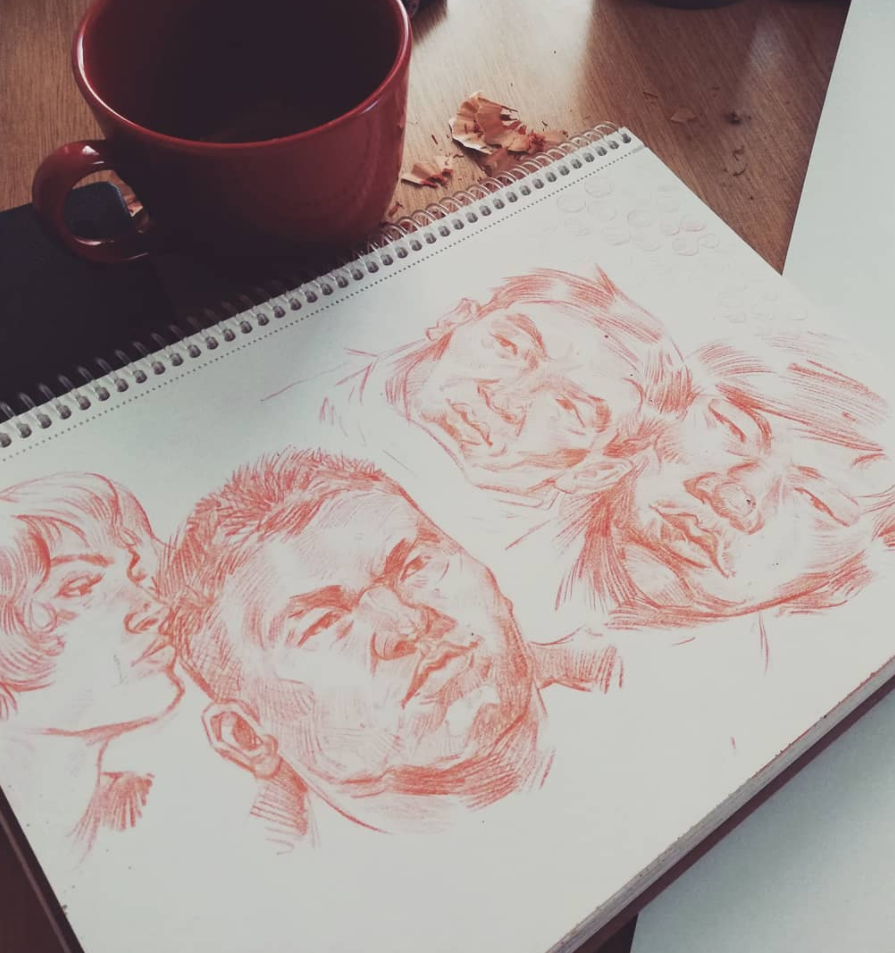
Some sketches by Bartu Bölükbaşı. Artist’s Instagram.
About the Artistic Style & Career in Illustration
M: Looking at your work, one can see that you prefer sticking to one single color palette in a single illustration, such as shades of blue or shades of red. Does this have a specific reason, the fact that you do not mix many colors but try to maintain a limited color palette?
B: Yes. To be honest, I am not fond of variety in colors. In my opinion, the concept of variety is an element that is peculiar to our world, it reminds one of what is beyond their control and does not accord with the fantastic. What is fantastic is the opposite of this world. When reading a fantasy novel or watching a fantasy film, anything in the work that reminds you of the real world will push you out of the fantastic atmosphere. This is why a writer/illustrator should keep their work clean of such elements. I create works in both monochrome and duochrome styles. I do have colorful works such as Gesar: Yokbol Begins or Farewell My Beautiful Homeland. However, I know that reducing the atmosphere to a single color means reducing the scene to a single emotion or meaning.
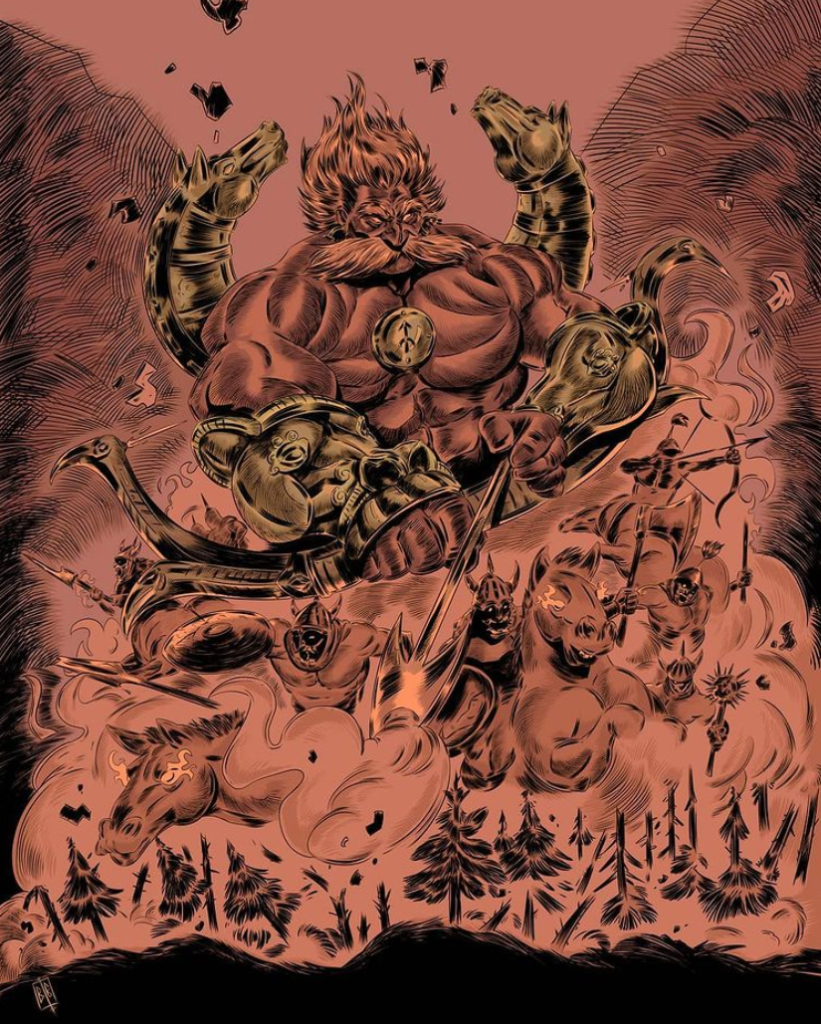
Bartu Bölükbaşı, Al Toyon, the master of fire in Turkic Mythology. Artist’s Instagram.
B: This also affects the neurological functions of the brain. If someone enters a room that is lit by a vivid blue light, they will get an uncanny feeling even if there was nothing wrong with the room. This is a feeling of fear that comes from something that is unknown, unnatural, thus, something that is fantastic. In a situation like this, the human brain tries to warn the person about what could be a potential threat for them, by comparing this environment with all the collected memories and data. However, it fails doing so, as, there is no data in nature about an environment that only features one single color. In such a crisis moment, the brain then warns the person about a situation that is so dangerous as never been experienced before. This experience normally gives someone chills, and they feel like leaving the room immediately. What we call fantastic is exactly this experience. I have always been so fascinated with the idea of a single color having such a huge effect.
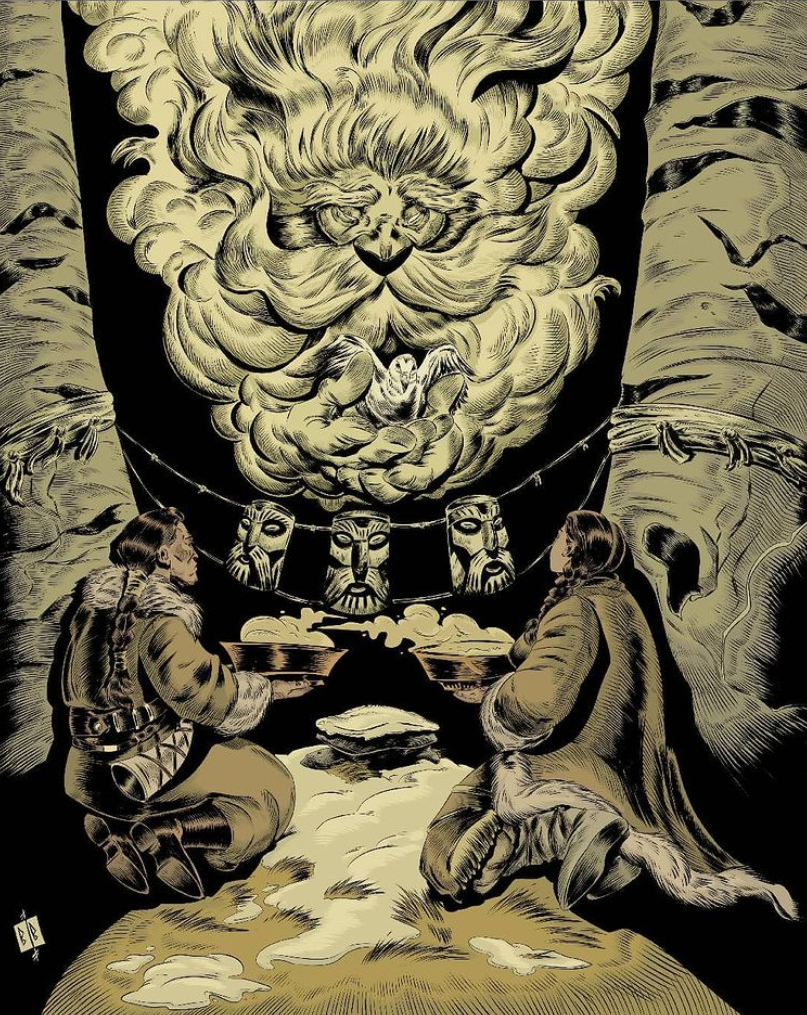
Bartu Bölükbaşı, Yayık, the carrier of souls in Turkic Mythology. Artist’s Instagram.
M: We know that you studied fine arts at a university and became a professional illustrator at your own initiative. What would you suggest to people who are aspiring to follow a similar path and building a career in the freelance illustration sector?
B: I suggest that they only study well enough to pass their classes so that they can start getting into their preferred discipline as soon as possible. In Turkey, the education in the faculty of arts is not sufficient. That is why, someone has to spend another four years after university to specialize in their field. This is a horrible situation. Academicians act more like officers in a government building. They are old-fashioned and lack the passion that is needed for an artist. Expectedly, this renders the universities in Turkey inoperative in both scientific and artistic fields. The discipline of design takes years to specialize in, both in theory and in practice. They should know this in the first place so they will not be disappointed later. I also recommend [to] aspiring freelance artists to not lose time listening to their instructors, families or others. When you do something with enthusiasm, it reflects your creativity. This can easily make you stand out in the sector where many people are doing similar things. When you are successful, you get applauded by all those people that previously told you that you wouldn’t be successful. You should not care about what those people say. Only focus on your art and you will make it.
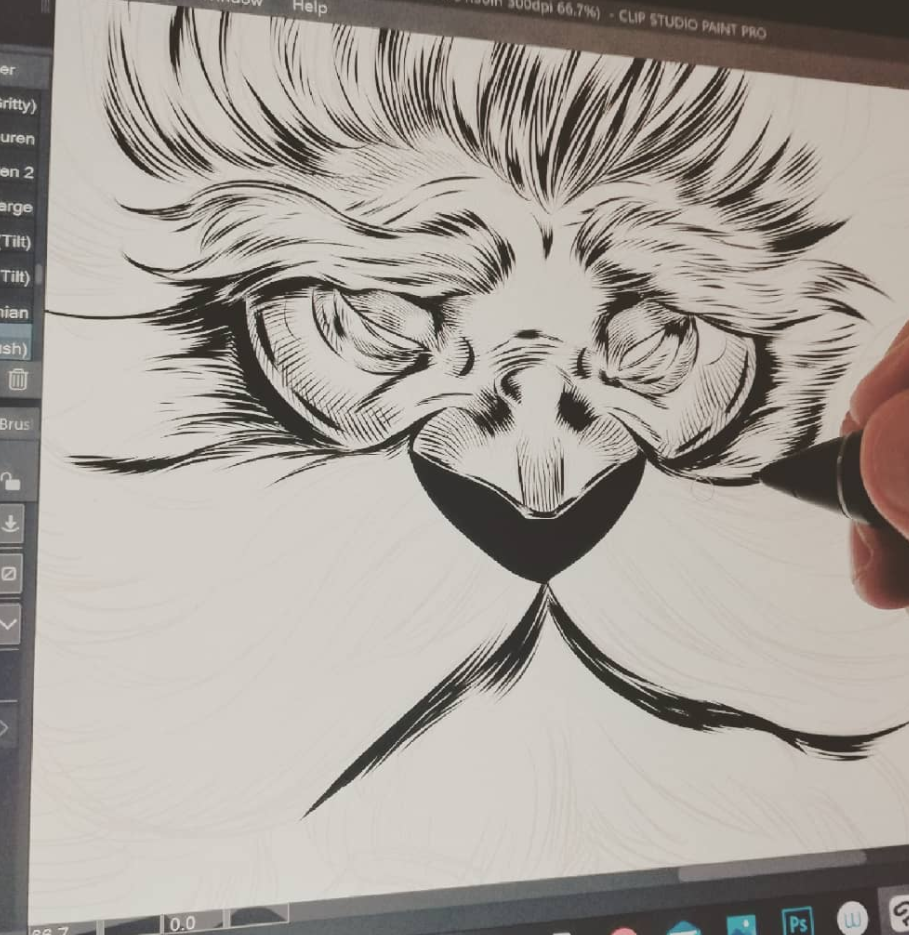
Bartu Bölükbaşı, Illustration of Yayık in progress. Artist’s Instagram.
M: Lastly, do you have any upcoming projects that will excite mythology enthusiasts?
B: I am planning to finish a Turkic mythology atlas in a few months. I have been working on it for a whole year. This will be a book where I examine Turkic myths in comparison to other mythological stories. I aim at reestablishing the cosmological conception of the old Turks as a system in the readers’ minds. This is going to be the first atlas in the global market in terms of the handling of gods, spirits, heroes, mythological creatures and places of the old Turks as a whole. I should say that the interest and support that this project has received has been way more than I expected. As an artist, I am not used to receiving this much interest, and I am very motivated by it. Until now, only the Greek, Egyptian, and Scandinavian mythologies have been published in atlas forms. I knew that many people such as the Celts, Mesoamericans, and Slavs have not yet published atlases for their mythologies. So, even the thought that we as Turks would have our mythology in atlas form got me very excited while I was preparing the first designs. I started the whole project based on this excitement. Now, I am waiting for it to be completed.
We wanted to thank Bartu Bölükbaşı for having a nice and intellectual talk with us! You can see his works on his Instagram account.
